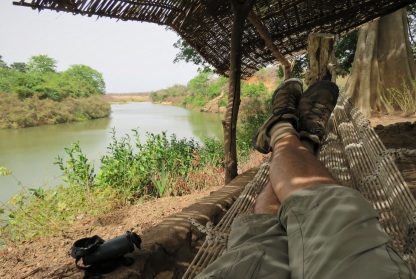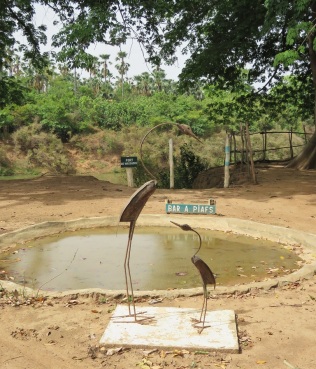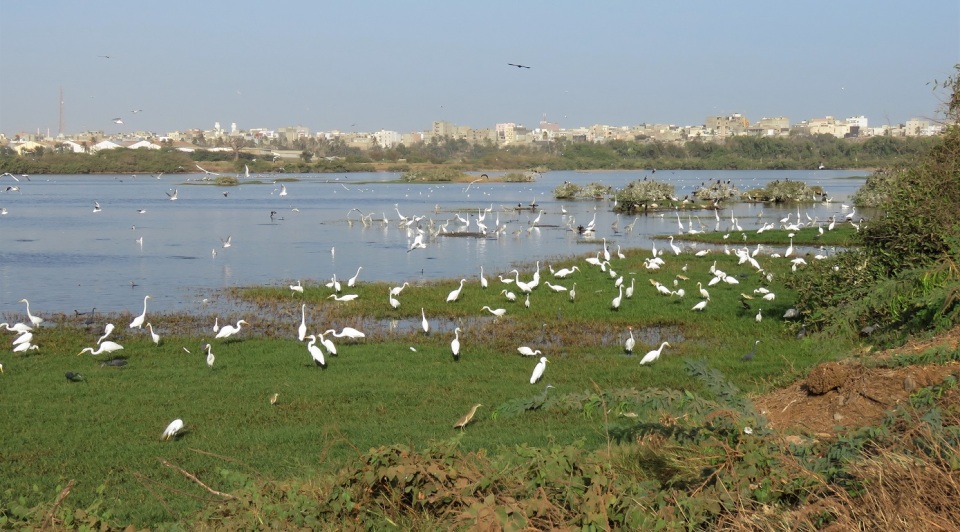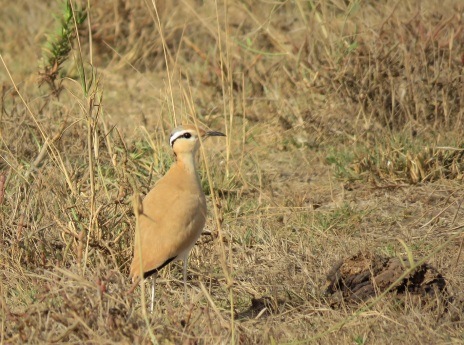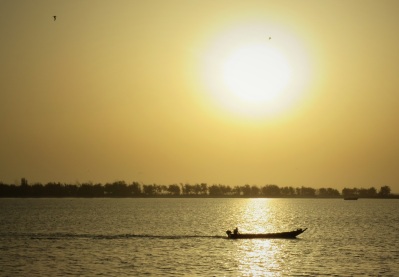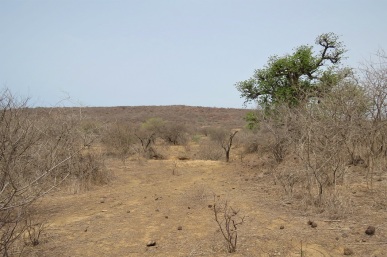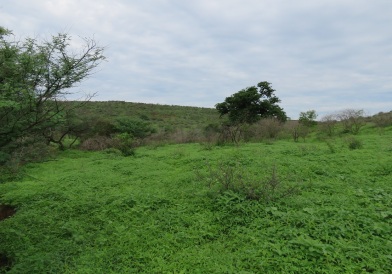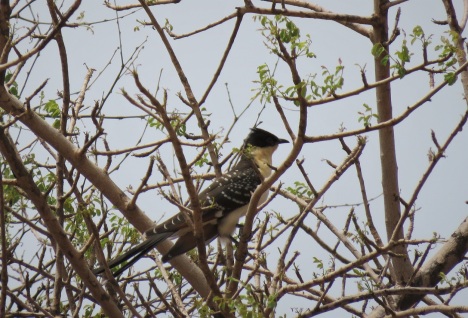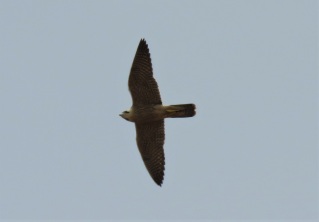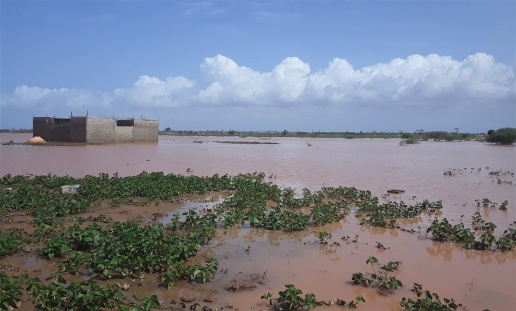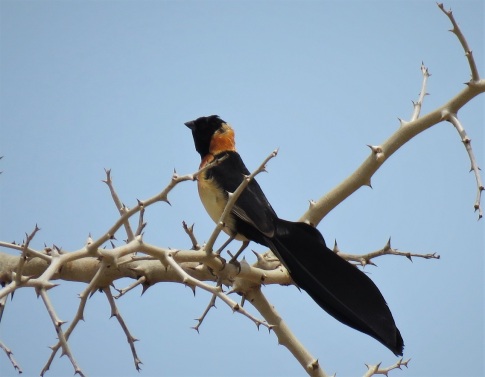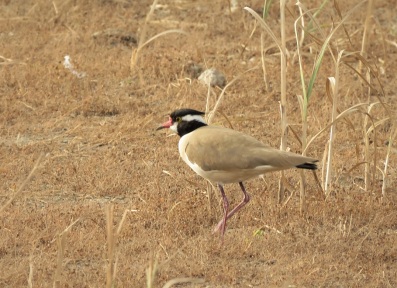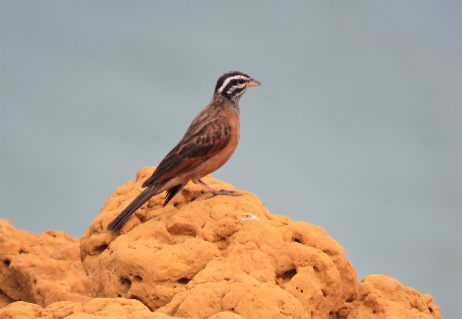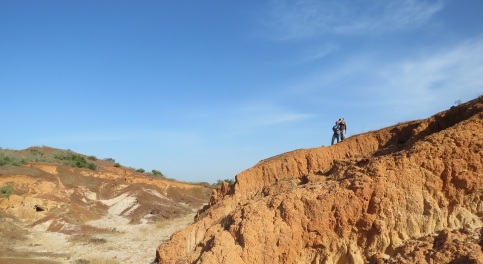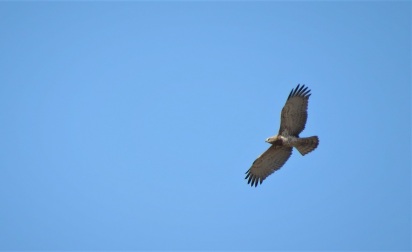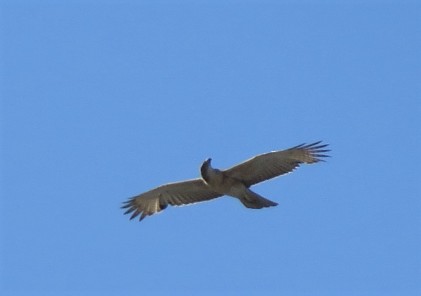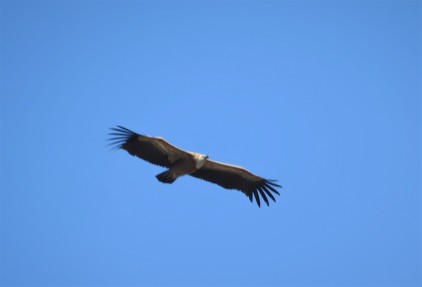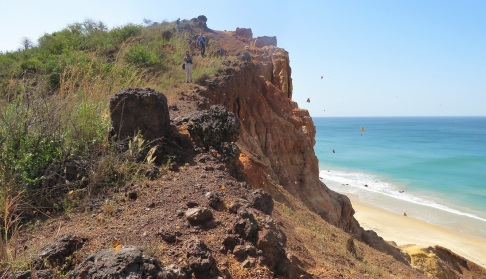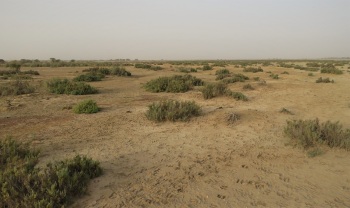Au revoir la Teranga
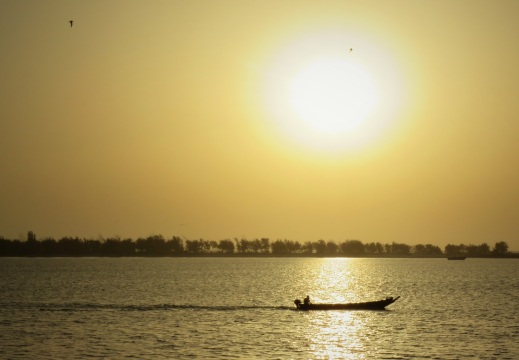
Our regular readers will have noticed that it’s been very quiet on this blog in recent months, so it’s about time I published an update here. There’s a simple reason for the lack of recent posts: after just over five years in Dakar, it was time to move on. Three weeks ago we landed in Laos where we will be based for the foreseeable future, marking the start of a new adventure here in Vientiane. And the end of a pretty amazing experience living in Senegal.
Moving on is of course bittersweet, as I will certainly miss the fabulous bird life that Senegal has to offer, yet at the same time I’m excited to discover the birds and culture of Laos. Even if we’re currently living in rather unsettling and unpredictable times, to say the least. Many of you will be reading this while confined at home, but being extremely busy with my work here I’ll need to keep it short… somehow writing this post is actually the one that I’ve struggled the most with so far – it’s been sitting in my drafts for about three weeks now.
Over the past five years I managed to visit all but one of the country’s regions – sadly I never made it to Matam! – and was lucky to see a good deal of its birds, 530 species to be precise, 527 of which I saw during 2015-2020. A few other numbers: some 52,500 records “collected”, four additions to the country list, about 1,040 sound recordings posted on xeno-canto, tons of poor quality bird photographs, countless happy hours in the field…
There are of course a few specials that I didn’t get to track down, such as Golden and Egyptian Nightjar, White-throated Francolin or Denham’s Bustard to name but a few, and I somehow managed to never visit Kousmar (pretty unbelievable right?) and the Niokolo-Kobo proper (I was happy enough exploring Wassadou on three occasions), but these are all good reasons to one day come back of course. That said, I’m not very optimistic about the state and future of Senegal’s environment, and while this is not the time to expand on this, there have been many frustrating, sad and upsetting moments when confronted on an almost daily basis with the ongoing destruction of natural habitats, with the ever-increasing pollution levels, and with the population’s general indifference and ignorance when it comes to nature and wildlife conservation.
Senegal certainly has treated us well and I feel privileged to have had the chance to explore the country these past few years. I tried to promote birding in Senegal and think I made some modest contributions to the “body of ornithological knowledge” both through this blog (149 posts!) and through a number of papers, 14 to be precise, something we’ll try to continue doing in coming months (years?). The absence of recent posts on SenegalWildlife is definitely not for a lack of ideas or material… just need to find the time to write up stuff, be it here in these pages or elsewhere.
Lots of good memories, of encounters with birds of course but also of places and people, too many to start listing here. Unexpected finds, and some unexpected birding settings.
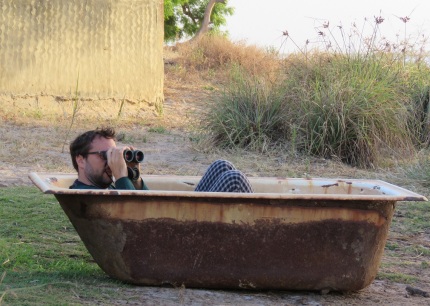
Birding the Saloum delta (yes that’s me in my pyjamas in a bath tub on the edge of a mud flat, one of those randomly surreal settings one may find oneself in… only in Senegal!) – Picture by Jane Piot
Despite the crazy busy few weeks leading up to our departure from Dakar, I was of course keen to go back out to some of my favourite spots: Popenguine, Technopole, Mbeubeusse, Lac Rose, and of course Le Calao for my daily dose of seawatching.
And as always there were some good birds to be seen here, some of which were quite unexpected. During my last visit at Technopole on the morning of our departure (8.3), a pair of Eurasian Teals was a nice find. My final ring reading here was of a French Eurasian Spoonbill ringed in the Camargue colony in 2016… with now +600 ring readings in my little database, there’s definitely enough material to write up another post on this topic. An immature Brown Booby on 21.2 and 5.3 at Ngor was pretty classic at this time of the year. Much less expected was a fine Cream-coloured Courser on the steppe near lac Rose on 20.2, apparently the first record for the Dakar region. It was loosely associating with a few Temminck’s Coursers, a classic species here, just like the handful of Greater Short-toed Larks that were present the same day. A few days earlier, a Temminck’s Stint at Mbeubeusse (16.2) was yet another scarce migrant to show up at this prime location for waders. And during our last visit to Popenguine (23.2) a Chestnut-crowned Sparrow-Weaver was a good record from this location, of a species that is rarely reported away from the south-east and that in fact I’d only seen once before in Senegal, near Kedougou.
Thanks to our followers and regular readers.
Take care, stay safe, flatten that curve.
Au revoir le pays de la Teranga, à la prochaine!
Wet season visitors, Popenguine & co.
Every year during the wet season, the Sahel undergoes an impressive transformation, the landscape turning all lush green in the space of just a few weeks. Four visits to the northern Petite Côte area in just as many weeks were a nice opportunity to see this extremely rapid transition from ultra-dry to completely soaked terrain. And with it of course the associated changes in bird life.
On our first excursion to Popenguine mid-August, shortly after the onset of the first few rains, the reserve was still bone dry, only the baobabs being all green & leafy while grasses has only just begun to sprout.
Exactly one month later, this is what the same area looked like (the same baobab tree can be seen in both pictures):
Impressive, right? It never ceases to amaze me how fast everything grows here once the rains arrive!
For now, back to mid-August when all was dry, and when the highlights of our visit were a juvenile Great Spotted Cuckoo (locally hatched?)…
… a female Standard-winged Nightjar (on transit, looking for greener pastures? August is breeding season here for the species…)…
… and finally this juvenile Peregrine Falcon circling briefly above the cliffs before disappearing towards the village – an early record here, though perhaps not that surprising given that the species breeds early in the Mediterranean, even if the pair that winters in Dakar every year typically shows up around mid-October only.
Fast-forward ten days, after copious showers in the preceding days, and the lagoons of the region were now completely filled – in particular the Yene lagoon which I’ve never seen this high:
Few waterbirds were around but this will surely change in coming weeks; a Knob-billed Duck amongst the White-faced Whistling Ducks was the most notable species here (Canard à bosse, Dendrocygne veuf). Should be interesting to see how the birdlife evolves here in the next few months, and what species will show up this year (last year with the lack of rains the site was pretty disappointing, should be far more interesting this year!!).
A stroll on one of the hills above Toubab Dialaw produced several Savile’s Bustards and Singing Bush Larks, while Mottled Spinetails were flying above the small escarpment… Klaas’s and Diederik Cuckoos were heard near the village (Outarde de Savile, Alouette chanteuse, Martinet d’Ussher, Coucous de Klaas et didric).
The bustards were particularly vocal and obviously occur in good densities here, with at least 4-5 birds responding to one another. Recording here on xeno-canto; picture of habitat below. This rather sought-after Sahel special is clearly easy to find here, even if rather disturbed habitat, particularly during the rains but they may sing – albeit the shorter version of their song, and less regularly – throughout the dry season as well. They’re often difficult to spot and even a careful approach to a singing bird will usually result in just a brief glimpse, a bird flushed from low bushes, or no sighting at all… Senegal and to a lesser extent The Gambia currently remain pretty much the only easily accessible countries to find this species.
A male Sahel Paradise Whydah in full breeding plumage was encountered along the track leading to Diass:
Back to Popenguine on Sept. 8th, this time round for a very enjoyable bike tour through the bush between the villages of Popenguine, Ndayene and Toubab Dialaw (with Teranga Bike Adventure, highly recommended!) which provided a different kind of birding experience. Again Savile’s Bustard and Singing Bush Larks which are both very vocal at the moment, a Black-headed Lapwing breeding record (adult with chick), a Green Sandpiper flushed from a small pool along one of the tracks, a few Gull-billed Terns feeding over moist grassland, a Broad-billed Roller, Yellow-billed Oxpecker feeding on a donkey, a Gosling’s Bunting, and so on (Outarde de Savile, Alouette chanteuse, Vanneau à tête noire, Chevalier culblanc, Sterne hansel, Rolle violet, Piqueboeuf, Bruant d’Alexander).
Last Sunday, Popenguine nature reserve again: the usual suspects such as Rufous-tailed Scrub Robin (the resident ssp. minor, “African Scrub Robin”), Stone Partridge, Helmeted Guineafowl, Senegal Batis, several Sahel Paradise Whydahs including males in display flight and a few females, one of which was clearly interested in a pair of Green-winged Pytilias which is the host species of this brood parasite (Agrobate roux, Poulette de roche, Pintade de Numidie, Pririt du Senegal, Veuve a collier d’or, Beaumarquet melba). Woodland Kingfisher and Klaas’s Cuckoo had joined the ranks of the intra-African migrants that move north with the rains and that occur in Popenguine (Martin-chasseur du Sénégal, Coucou de Klaas).
Several Gosling’s Buntings were singing at the top of the Cap de Naze cliffs, with one bird posing quite nicely at short range:
Migrant songbirds have now started to arrive from Europe: at least three Sand Martins were flying overhead, clearly heading south, when I arrived by the pond which by now is completely filled with water; I heard a Tree Pipit, saw 4-5 migrating Barn Swallows, while the acacias and bushes held a few Melodious Warblers, Willow Warblers, a Common Whitethroat, and even a fine Nightingale. (Hirondelles de rivage et rustique, Pipit des arbres, Hippolais polyglotte, Pouillot fitis, Fauvette grisette, Rossignol philomèle).
The Popenguine eBird checklists along with other recent records from the area – including a surprising African Crake seen by Miguel – can be found here.
Plenty more to come!
Popenguine Raptor Fest (3.11.18)
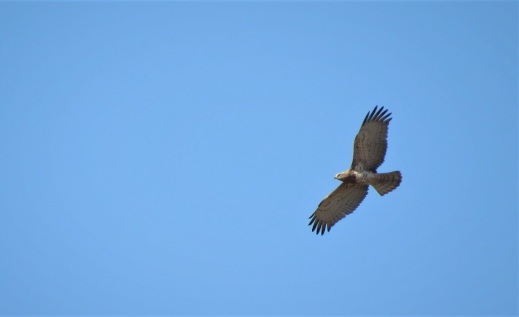
A visit to Popenguine nature reserve a couple of weeks ago quickly turned into a exciting few hours watching a good variety of raptors – something we’re not much used to in this part of Senegal, where there are few sites that are good for raptors, and most of the time anything else than a Yellow-billed Kite, Osprey or Hooded Vulture will qualify as a good record. Here’s a short overview, in order of appearance!
As always, several Ospreys were to be seen in the reserve; a few birds usually spend the night on the mighty baobabs that dot the Popenguine savanna, and all day long Ospreys can be seen flying around the cliffs or fishing out at sea. Later that same day at the lagoon just south of Toubab Dialaw, we had a good count of some 29 birds, all visible at the same time (Balbuzard). Popenguine of course also had a few Yellow-billed Kites patrolling the area (Milan à bec jaune).
As we were looking for a Common Rock Thrush we’d briefly spotted on a ridge ahead of the footpath, we noticed first an immature Peregrine Falcon flying around, then a European Hobby – the latter a scarce migrant through Senegal so always a good find. Hobby was already seen at Popenguine around the same time last year by Miguel. This time round it looked like it was an actively migrating individual, just like a Common Kestrel that briefly made an appearance shortly after (Faucons pèlerin, hobereau et crécerelle).
Next up was a Marsh Harrier circling in the distance, again probably a bird on its way to wintering grounds further south (Busard des roseaux). I’ve always thought that Popenguine would be a fairly strategic site to look for actively migrating raptors and other birds. Should be interesting to spend a few days here in October-November and February-March!
This Short-toed Eagle on the other hand was probably one of the 2-3 birds that typically spend the winter in the area around Popenguine and Guereo.
Far less expected than the previous species was an African Hawk-Eagle, spotted by Gabriel as it arrived from the north-east and made its way towards the cliffs, at one point circling together with a couple of Ospreys. Initially we weren’t quite sure about its identity and tentatively id’d this bird as a Bonelli’s Eagle, wondering whether a juvenile African Hawk-Eagle could be ruled out, and were a bit puzzled by the very pale appearance of this eagle. Luckily I managed a few record shots, a bit distant and hazy but they should do the trick. The plumage seemed to still be within the variation of worn juvenile Bonelli’s Eagle, but moult should not start until the second year and this bird shows clear moult contrast on with fresh inner primaries growing. Simon was the first to point out, after this post was originally published, that it looked more like African Hawk-Eagle. I eventually sent out the picture for comments, and Dick Forsman kindly responded, confirming that it’s an African Hawk-Eagle: “It is overall lighter below, the juvenile remiges (primaries + secondaries) are too light and too poorly barred below for a juv. Bonelli’s and the replaced inner primary shows just a dark tip without any further barring. Note also the translucent primaries in the images with blue sky, another pro-spilogaster feature.” Thanks Dick! (post updated Dec. 27)
African Hawk-Eagle is reasonable common it seems through the southern half of Senegal, and is a classic sighting e.g. in the Niokolo-Koba area. There are some records from the Saloum delta and even from the middle Senegal valley (as per Morel & Morel and Sauvage & Rodwell), but as far as I know this is the first from the Petite Côte.
I’m still hoping to see Bonelli’s Eagle one day in the Djoudj, Trois-Marigots or elsewhere in the Senegal valley, the only area with more or less regular records in winter (mainly by Frédéric, who year after year has documented the presence of a few birds around Saint Louis and who nicely summarised the current knowledge about this scarce species in West Africa, in this post on Ornithondar).
After we’d reached the top of the cliffs, next up was this Eurasian Griffon which appeared to be actively migrating along the coastline, just like a second bird we’d see a couple of hours later that same morning near Yène.
Barely a few minutes later, Gabriel strikes again with a young Lanner making a brief appearance, just as we were heading back towards the reserve entrance (Faucon lanier). That’s four species of falcons, not bad! In previous years we’ve also had Barbary Falcon near the cliffs, and surely Red-necked Falcon and Grey Kestrel must also occur at least occasionally, while in the wet season it may be possible to encounter African Hobby.
We thought we’d seen pretty much everything when at the last minute a Shikra was seen dashing over the pond (all but dry!), bringing our morning’s total to 11 birds of prey.
Besides all these hooked beaks, as always the nature reserve held quite a few other good bird, such as Gosling’s Bunting, Green-winged Pytillia, Sahel Paradise-Whydah, Blue Rock Thrush, and Northern Anteater Chat. In the end we saw two different Common (=Rufous-tailed) Rock Thrushes, a scarce migrant in Senegal, see this post on our first encounter with the species, in February 2016 at… Popenguine! Also a decent flock of Pallid Swifts and a few White-throated Bee-eaters, both pretty good bonus species, while two Pygmy Kingfishers including at least one dark-billed juvenile provided proof that the species is breeding here.
Complete eBird checklist available here.
The bird list for the Popenguine reserve now stands at some 198 species, at a minimum that is: I listed more than 20 other species as being most likely present, but which apparently remain to be confirmed. More on that over here.
Oh and then there were the butterflies – pure magic! Thousands and thousands of butterflies everywhere, especially along the track up the cliffs. With every footstep, small clouds of butterflies would explode, while a constant stream of butterflies was passing by the cliffs. Our visit clearly took place during peak migration season of Painted Lady which were the vast majority, and to a lesser extent some pieridae. And loads of dragonflies! Difficult to capture on camera but if you look carefully at the image below you’ll get a bit of a sense of what I’m trying to explain here.
Popenguine encore

Avec un peu (même beaucoup) de retard, voici un bref compte-rendu de nos visites les plus récentes à la réserve de Popenguine. D’abord en février puis début avril et de nouveau il y a quelques jours pour ce qui était pour moi une première visite en juillet sur le site. La visite de février en compagnie agréable de mes amis genevois (17/2), la deuxième en solo lors d’un séjour au lodge de Dalaal Diam en bordure de la lagune de Somone (3/4), et la plus récente avec David, ornitho de passage à Dakar (29/7).
Comme d’habitude, chaque sortie apporte son lot de surprises et de nouvelles connaissances sur ce coin, et notamment lors de l’hivernage il y a des chances de trouver des espèces intéressantes, la plupart des visites précédentes ayant eu lieu pendant la saison sèche.
On commence par le plus fort et le moins attendu: un Turnix mugissant, levé lors de la sortie en février (Common [aka Small] Buttonquail). Pas tout à fait sûr de ce que c’était lorsque l’un de nous l’a fait décoller, on part à sa recherche: pas facile de le relocaliser! Ce n’est qu’en passant à moins d’un mètre de l’oiseau qu’il s’extrait à toute vitesse de sa planque, pourtant bien camouflé… Lors du deuxième envol on a vu que ça ne pouvait être qu’un turnix et non une caille, vu sa taille très réduite. Afin de s’assurer qu’il s’agissait bien d’un Turnix mugissant (= T. d’Andalousie) et pour permettre à tout le monde de le voir, on l’a relocalisé encore une fois avant de le laisser tranquille.
Cet hémipode – du Grec “demi pied” en raison de l’absence de doigt arrière, genre Pic tridactyle – figurait déjà sur la liste des oiseaux de la réserve établie en 1984-’86 par Charles Rouchouse, mais je doute qu’il y ait eu beaucoup d’observations depuis. C’est sans doute un oiseau assez répandu au Sénégal, juste pas facile à voir!
En avril, la surprise vient d’une espèce encore plus répandue mais que je ne vois que rarement, et encore moins sur le nid: un Grand-duc de Verreaux qui semble en train de couver dans une anfractuosité de la falaise (Verreaux’s Eagle-Owl). La photo ci-dessous a été prise du haut de la falaise à bonne distance du nid donc sans dérangement aucun (on devine tout de même ce qui doit être un œuf à droite sous l’oiseau!).
Cette observation est intéressante, car le site de nidification en falaise et non dans un vieux nid arboricole d’une autre espèce serait plutôt inhabituel pour ce hibou géant. Malheureusement je n’ai pas eu l’occasion d’y retourner assez rapidement pour voir ce qu’il en est de cette nichée (à Ndiaffate près de Kaolack, un famille locale avait déjà quitté l’arbre de nidification lorsque nous y sommes passés à la mi-juin).
Ensuite quelques classiques de la réserve, comme ce Beaumarquet melba:
Ou encore les Marinets des baobabs (= M. d’Ussher, Mottled Spinetail), Traquets bruns, (Northern Anteater Chat), le Rollier varié (Purple Roller), les Erémomèles à dos vert, le Bruant d’Alexander (Gosling’s Bunting – plutôt discret en février et avril, chantant timidement en juillet), et j’en passe.
Le début de la saison des pluies marque l’arrivée de plusieurs migrateurs intra-africains: dimanche dernier, on a ainsi noté quelques Coucous didrics, Martin-pêcheurs pygmés et Martin-pêcheurs du Senegal (Diederik Cuckoo, Pygmy & Woodland Kingfishers). Avec l’ajout de cette dernière, la liste des oiseaux de la réserve s’établit à au moins 189 espèces et plus probablement plutôt 200 à 210 (je vous avais dit que j’aime les listes!)

African Grey Hornbill / Calao a bec noir
En hiver – à ne pas confondre avec le terme hivernage, utilisé pour désigner la saison des pluies ici – on a bien sur eu du Monticole bleu avec juste un mâle vu en février et au moins une femelle en avril, et environ cinq Hirondelles de rochers en février, ces dernières n’étant logiquement plus présentes début avril (Blue Rock Thrush & Crag Martin).
Comme toujours aussi bien l’Agrobate podobé que l’Agrobate roux (Black & Rufous-tailed Scrub-Robins) fréquentent Popenguine, tous les deux apparemment nicheur. L’Agrobate roux semble atteindre ici plus ou moins sa limite meridionale sur les cotes sénégalaises; au moins un chanteur était encore présent en juillet, et cet individu photographié en avril avait tout l’air d’être un authentique africain, soit la ssp. minor qui niche à travers le Sahel.
Par contre, cet autre agrobate vu début avril semble plutot être un oiseau de la sous-espèce nominale, soit un hivernant venu du bassin méditerrannéen. Malgré le contre-jour, on voit une nette barre subterminale noire bien large, critère principal pour le distinguer de la (sous-)espèce minor.
En tournant le regard vers la mer, en février on a eu quelques Fous de Bassan, Sternes voyageuses et royales, au moins deux Labbes “pomasites” (= pomarin ou parasite!), quelques Goélands d’Audouin, etc. (Northern Gannet, Lesser Crested & Royal Tern, Skuas, Audouin’s Gull).
Dans le ciel, quelques rapaces hivernants avec notamment un Faucon pèlerin et ce Circaète Jean-le-Blanc, mais à part quelques Balbuzards (sans doute des jeunes estivant sur la Petite Côte) et Milans à bec jaune il n’y avait point de rapaces lors de notre visite le 29/7, peut-etre trop matinale pour les rapaces! (Peregrine, Short-toed Eagle, Osprey, Yellow-billed Kite)
Donc comme toujours pas mal d’oiseaux avec une belle diversité à la clé, mais la réserve a soif… la petite pluie de fin juin n’a pas suffi pour véritablement démarrer l’explosion de verdure et de vie qui, on l’espère, ne tardera pas à venir ces prochaines semaines. L’étang n’est plus qu’un fond de de vase qui n’attend que la pluie – et avec elle, les oiseaux!
Pour une présentation plus complète de la réserve naturelle de Popenguine, voir cet article.
New Trip Report – the North, Saloum, Wassadou & Dakar

It’s always a pleasure to read good trip reports by birders who visit Senegal. More and more visitors now report their sightings through eBird or Observation.org, but few go through the effort of writing up their notes – despite best intentions, as I can sadly testify to myself.
Too many birds, not enough time, right?
A small Danish team visited Senegal last November, and I happened to meet them while seawatching at the Calao at the start of their visit, together with guide Carlos who expertly showed them a great deal of excellent birds – and then again towards the tail end when we briefly met up in Toubacouta. I recently received their trip report, one of the few good ones that were published on Senegal recently. There are useful sections on travel arrangements, weather, timing, pets, and resources (many thanks for mentioning this site!). And very importantly, a brief review of key places visited during the trip: Dakar, Trois-Marigots & Djoudj, Richard Toll, Kousmar, Wassadou & the Niokolo-Koba National Park, Toubacouta & Delta du Saloum, and finally Popenguine. Information on key species is provided along with some info on accommodation and access, and almost all are illustrated with pictures showing local habitats. Next up are species lists by site, followed by a comprehensive list of bird and mammal species seen.
Pretty much all the “specials” were found, both up North and in the Saloum and Niokolo-Koba areas. Also a few less expected birds, such as a high count of Stone-Curlews at Richard Toll (90! with 12 more at Trois-Marigots), a slightly out-of-range African Hobby at Trois-Marigots, a couple of Temminck’s Stints, Shining-blue Kingfisher at Wassadou (though apparently it’s quite regular there at the moment), and an Aquatic Warbler seen during the boat tour to the Djoudj pelican colony (they’re present of course, but seeing one is rare!). And a good breeding record of Fulvous Babbler – apparently one of the few confirmed in the country – with a bird on the nest at Richard Toll.
Oh and I almost forgot – the report is stuffed with brilliant pictures including many of the country’s iconic birds, such as this pair of perfect Swallow-tailed Bee-eaters seen near Toubacouta, or the stunning Cricket Warbler from Richard Toll further down (all pictures in this post by Morten Heegaard, Stig Jensen & Jon Lehmberg).
And make sure to read through to the very end, where you’ll find an enjoyable bonus section on the raptor roost at Ile de Kousmar near Kaolack. To quote the authors, “Why a lot more birders aren’t visiting this roost is a total mystery to us, and that some are even spending a night in Kaolack without coming here is simply beyond belief”. I, for one, am ashamed to say I have not made it to Kousmar yet: next winter, sans faute.
The report can be downloaded directly from here (PDF, 5 MB), or from the Cloudbirders site, which contains a number of other good trip reports on Senegal, many of which are from tours combined with Gambia. Many are fairly dull species lists, but among the more recent ones this report by Birdquest from February 2017 (Podor, Dindefelo, Wassadou, Saloum etc.) is worth a read for those planning a trip to Senegal even if it fails to provide any useful information on where to find the most wanted birds (and there are a few errors as well, e.g. Mali Firefinch is not restricted to Kedougou in Senegal, and Marbled Teal is very much a regular visitor to Djoudj). I guess that’s one of the differences between commercial tours that rush from one place to another (imagine spending just a single day in Dindefelo?!) and a bunch of passionate friends who are keen to share their explorations. Dieuredieuf, Morten, Stig & Jon!
And since we’re talking trip reports – a really enjoyable report in very much a different style is this recent one from The Gambia: BIRDBLOG GAMBIA 2018. Woodsmoke…dust…many birds!
“The ironically named Singing Cisticola showed well, but sang very, very badly, however Scimitarbill and Grasshopper Buzzard rebalanced the cool scale”
Proof that birding trip reports don’t have to be boring reads – highly recommend it, I had a real good laugh!

